Walt Stearns: Florida’s Palm Beach Coast
The 45-mile stretch of coastline of Florida’s largest county Palm Beach often goes by the nickname Florida’s Gold Coast. While this title might apply to the golden tint of the beach sands, the real gold is the incredible diversity and density of marine life that is regularly seen here.
On any given day, divers are likely to see fish in more significant concentration and sizes than you’d encounter at any dive site in the Caribbean. The list of big-ticket subjects includes sea turtles (all 5 species found in the Atlantic), sharks (lemon, bull, reef, sandbar, silky, tiger, hammerhead, etc.) and there is, of course, the Palm Beaches heavyweight darling, the goliath grouper (Epinephelus itajara).
Growing to weights over 450 lbs., goliaths are the biggest member of the grouper family in the world. Adding to that spectacle, during August and September, these heavyweights of the reef form spawning aggregations of the likes you will not find anywhere else in the world.
Ask any local diver in Palm Beach Florida as to why the diving here is excitingly good here; you’re likely to get the answer; “it’s the Gulf Stream silly.”
That part would be correct, as this significant player of the Atlantic’s oceanic currents sweeps closer to shore (sometimes a mere 3 miles out) here than anywhere else along the US Atlantic coast. The reason as to why is due to a geographical quirk as the contours of the continental shelf reach its narrowest point spanning as little as 3.5 miles in width. In addition to retaining closest point than anywhere else along the Eastern Seaboard, this particular part of the Florida coast bulges eastward into the pathway in the Stream as it flows northward through the Florida Straits placing those sparkling blue waters right on the Palm Beaches doorstep.
To see more of Walt’s stunning work, please visit his website.
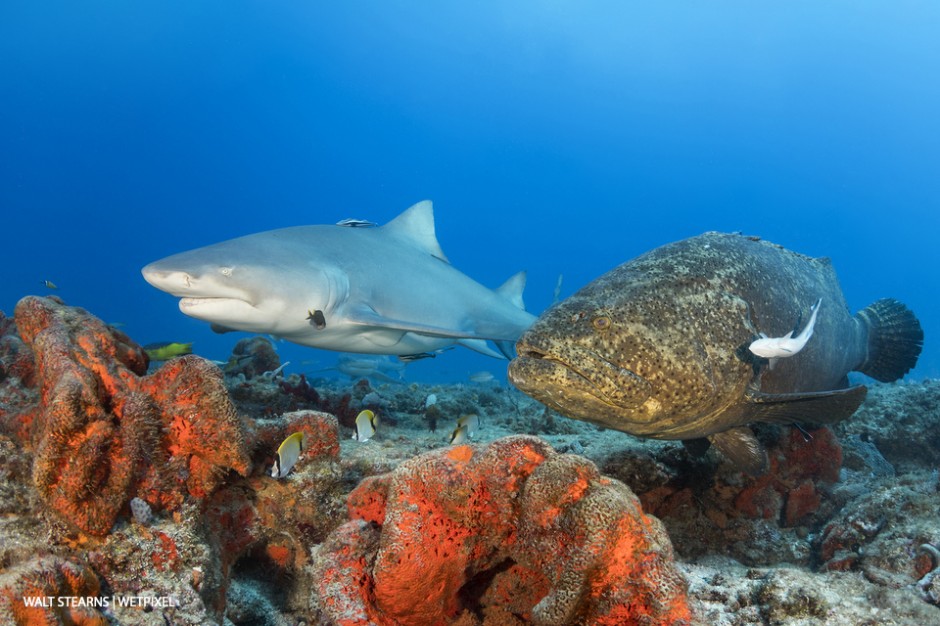
This portrait of a lemon shark and a goliath grouper is special to me. Goliaths have been protected since 1990, and lemon sharks received protection in 2010. I have invested significant time in ensuring that they remain protected.
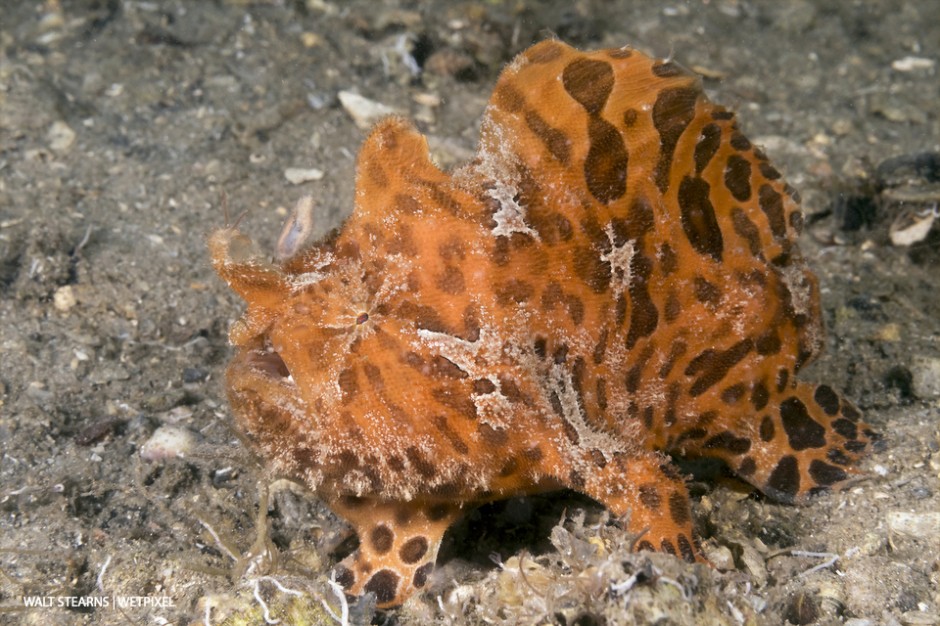
Lone male striated frogfish (Antennarius striatus): No visit to Palm Beach is complete if you have not done a dive at the Blue Heron Bridge during the incoming tide.

Wrasse Basslet (Liopropoma eukrines). This deep-water species reef basslet is commonly encountered under overhangs of reefs in depths deeper than 90 feet.
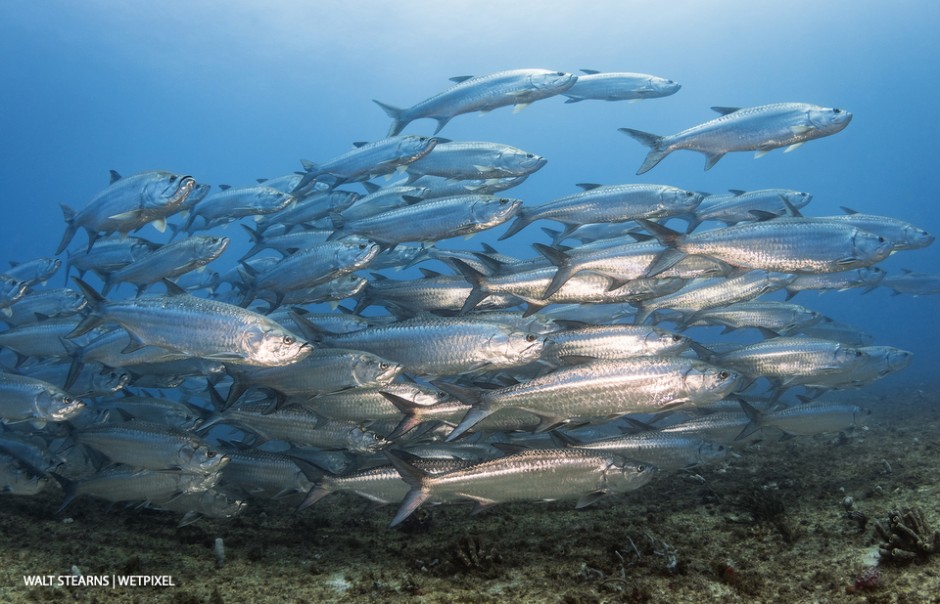
This place never ceases to amaze. During a dive on one the mid reef sites, school of giant tarpon (Megalops atlanticus), each measuring 5 - 6 feet in length swam past.
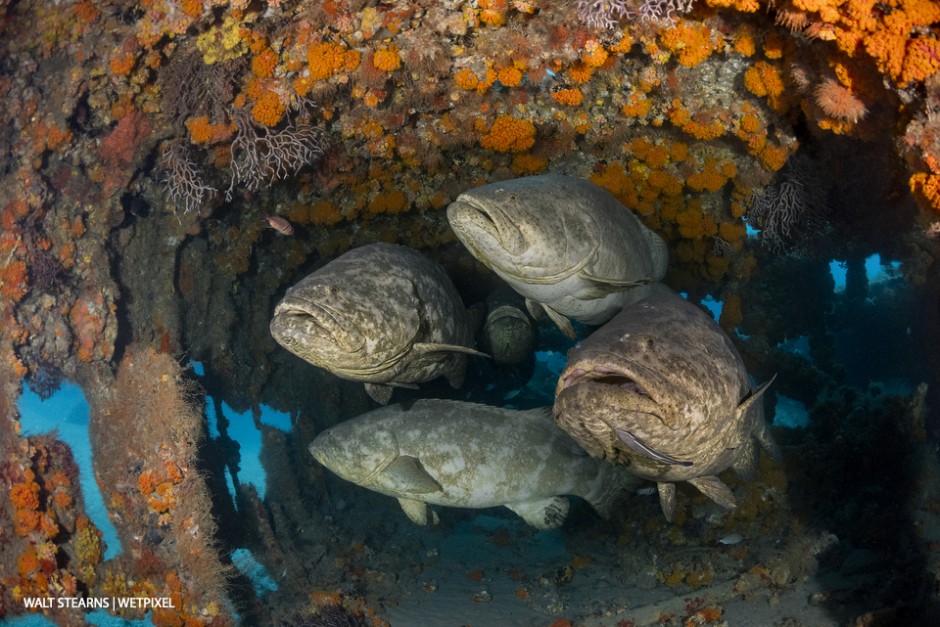
Group of goliath groupers (Epinephelus itajara) huddled together inside the West Palm’s Mizpah wreck. The primary rule to wreck diving in Palm Beach is not the wreck but what often gathers around it that makes the dive.
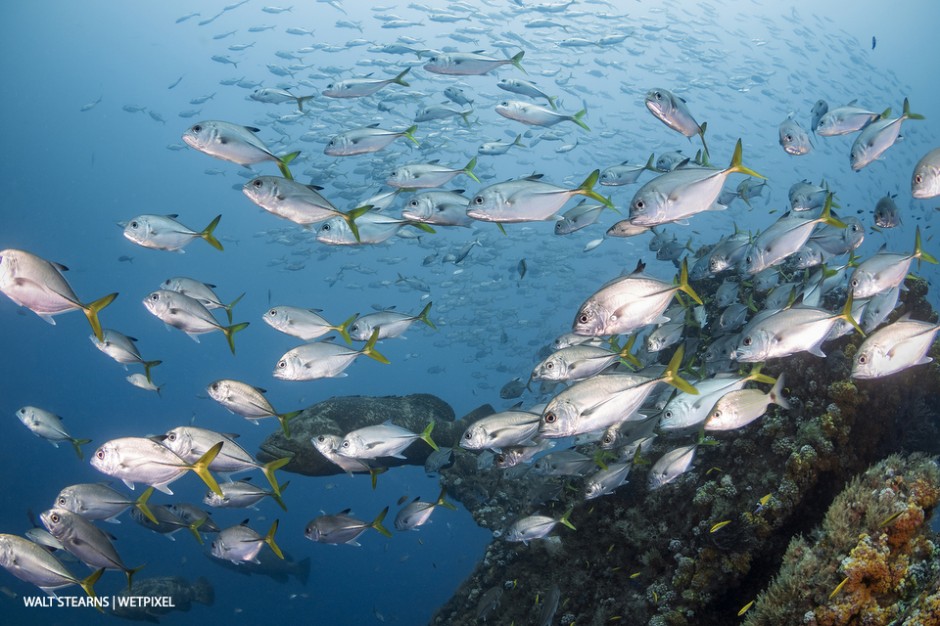
Horse-eye jacks (Caranx latus) school around the Castor wreck of Boynton Beach. This life-giving current not only nurtures coral growth, but also attracts a plenitude of marine life from open ocean pelagics to reef dwelling fish and invertebrates.
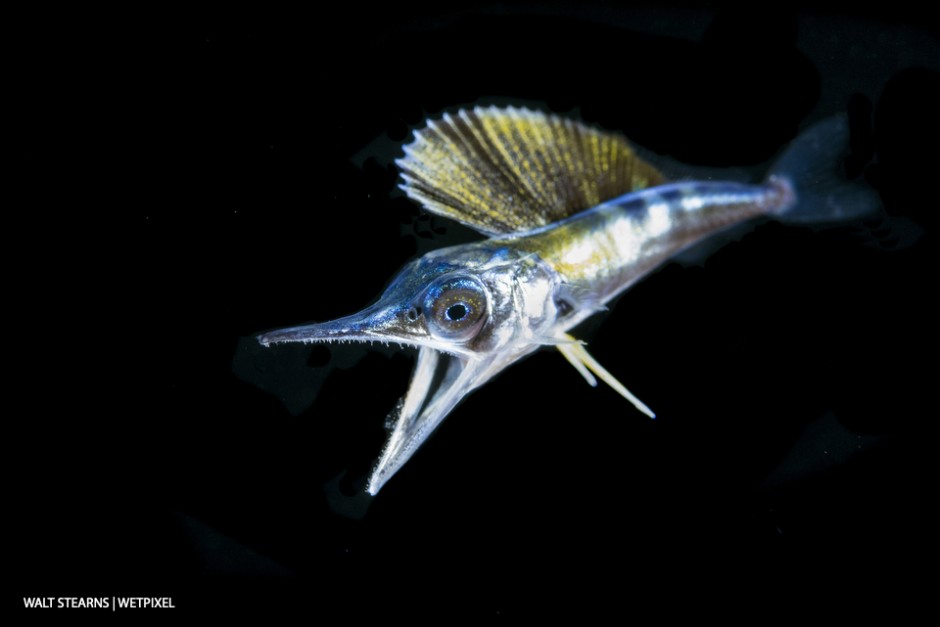
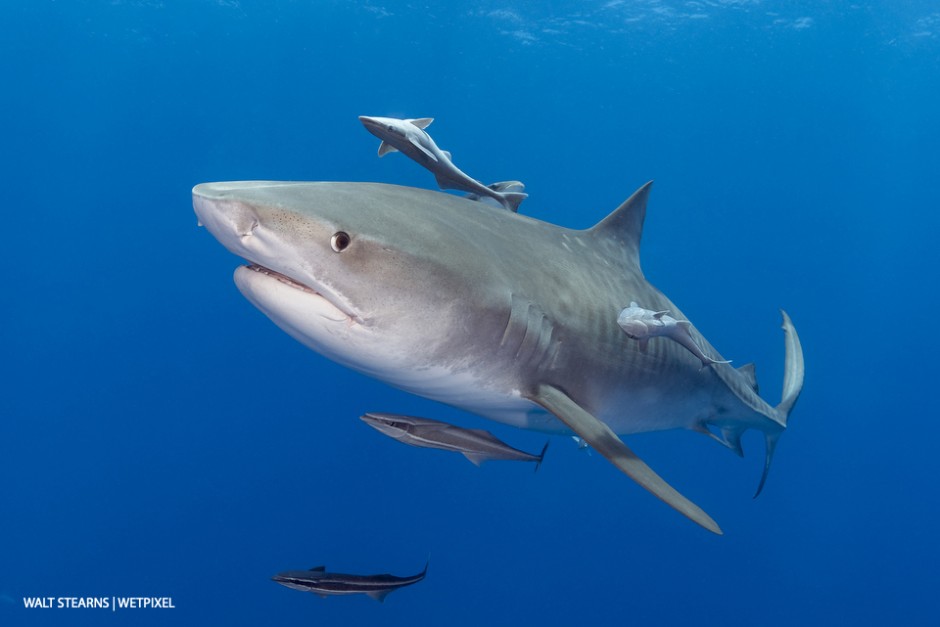
Speaking of large varieties of sharks, tiger sharks (Galeocerdo cuvier) are no strangers here between the months of February and June.
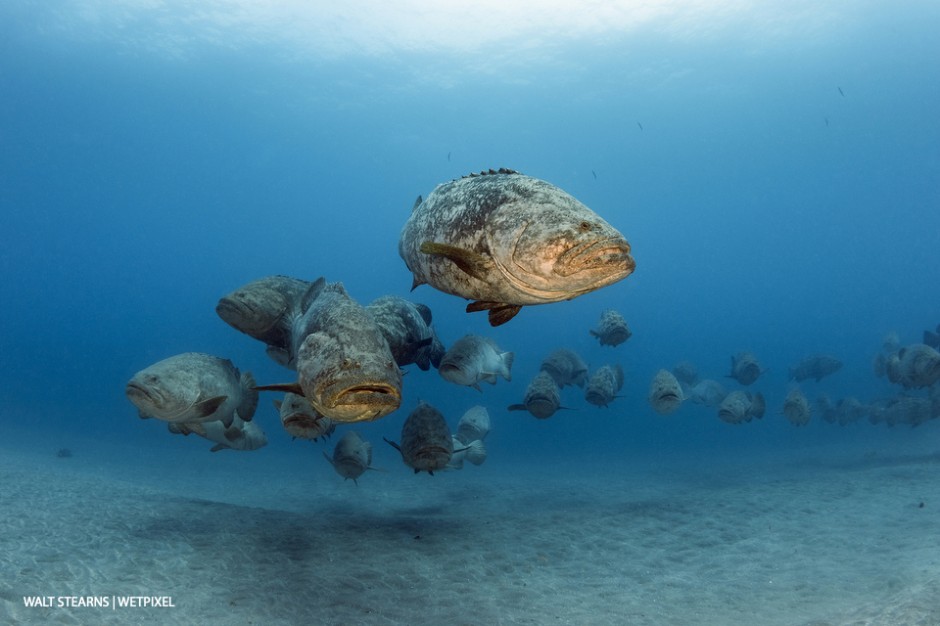
Goliath groupers (Epinephelus itajara) can weight more than 500 pounds each. During the months of August and September, these impressive giants of the tropical reefs will form up in large scale spawning aggregations.
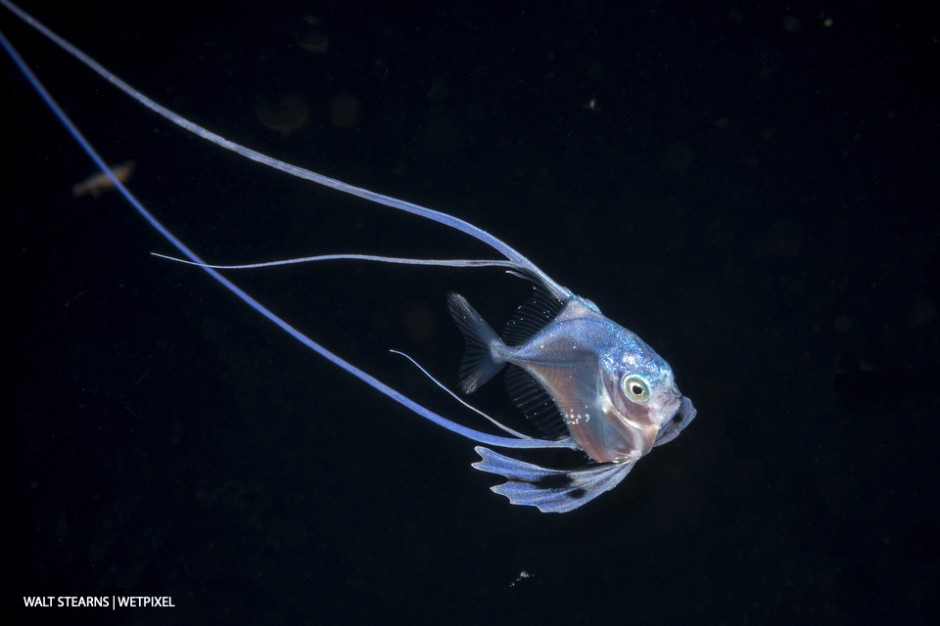
As a juvenile, they are called a threadfin, when they grow up they are better known as an African pompano (Alectis ciliaris).
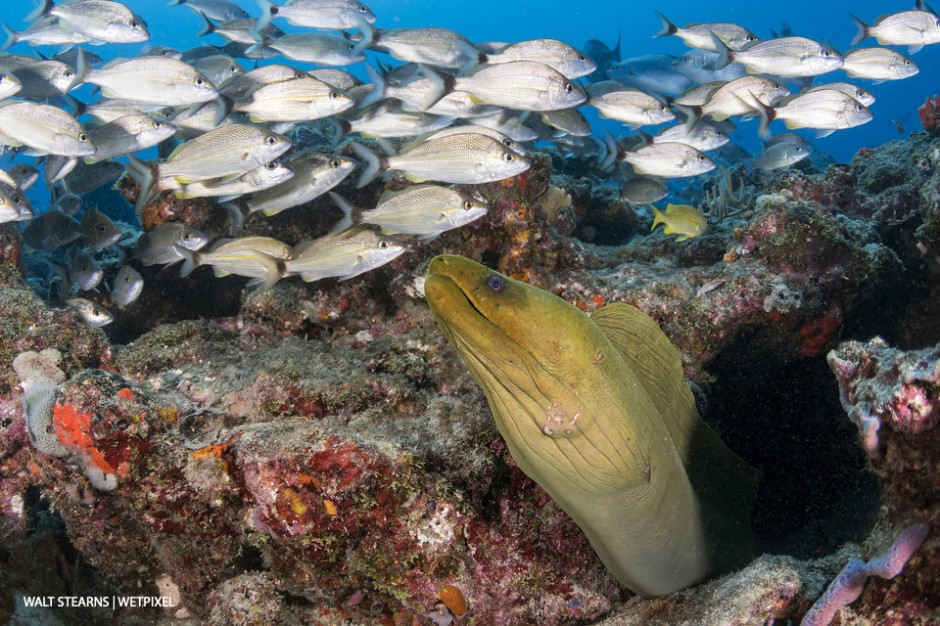
Large green moray (Gymnothorax funebris) on Breakers Reef. The Gulf Stream's life-giving current not only nurtures coral growth, but also attracts a plenitude of marine life from open ocean pelagics to reef dwelling fish and invertebrates.
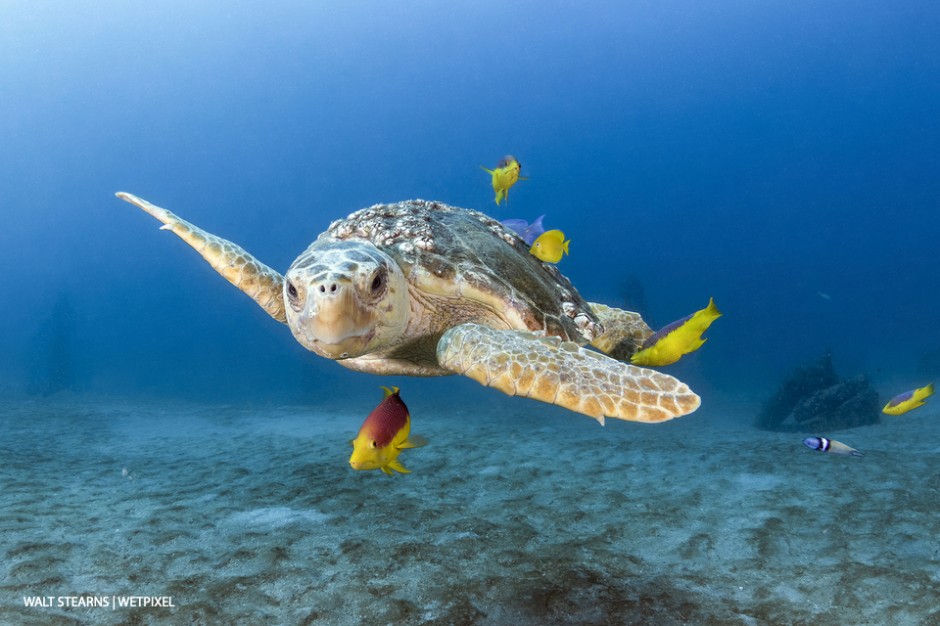
Loggerhead turtles (Caretta caretta) are common trademark to diving in Palm Beach waters. To not see at least one during a dive is considered a bad day, which is very few and far between.
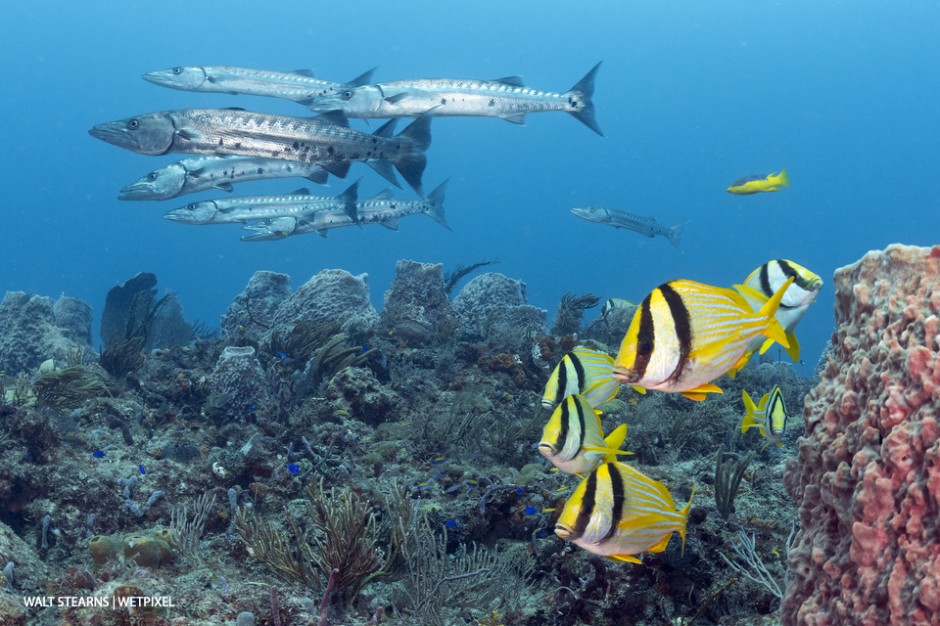
Pork fish (Anisotremus virginicus) and great baracuda (Sphyraena barracuda) on Breakers Reef. The Gulf Stream's life-giving current not only nurtures coral growth but also attracts a plenitude of marine life from open ocean pelagics to reef-
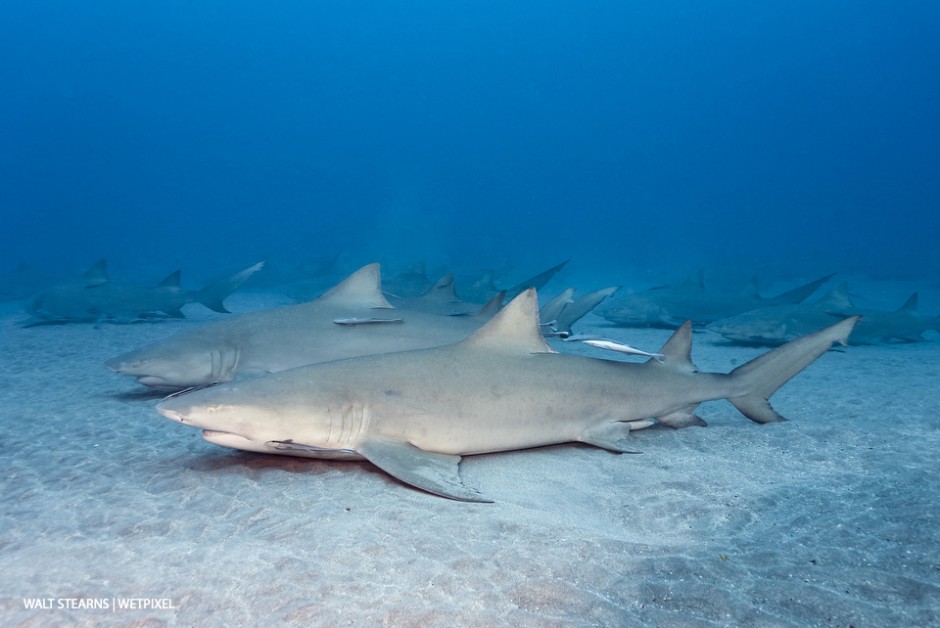
No, this is not Tiger Beach. In northern portions of Palm Beach in the Jupiter and Juno Beach area, the winter season brings a bigger influx of sharks, like this aggregation of adult lemon sharks (Negaprion brevirostris).
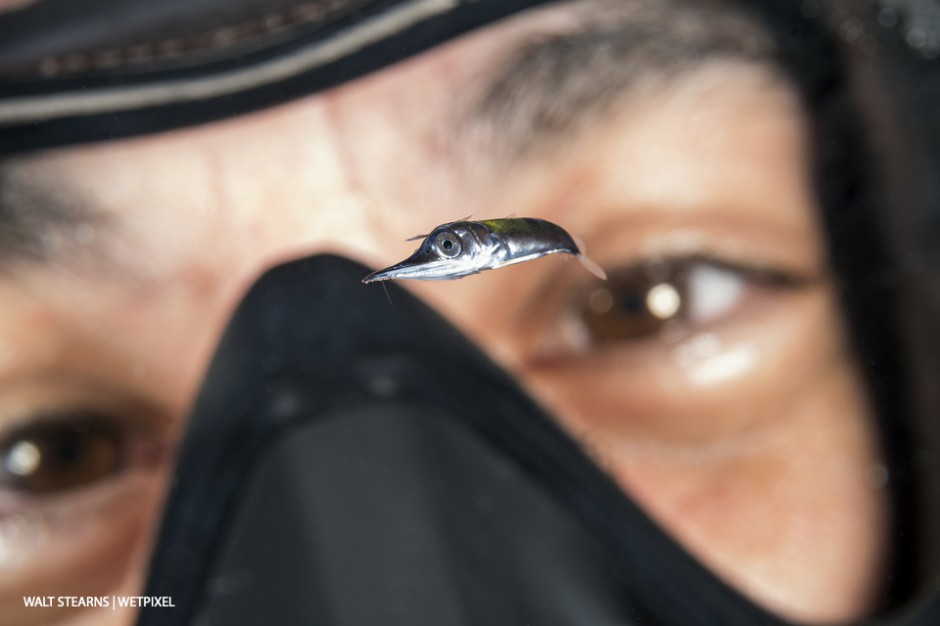
Big things often start from humble beginnings like this baby sailfish encounter during a blackwater dive in the Gulf Stream off the Palm Beach Florida coast.
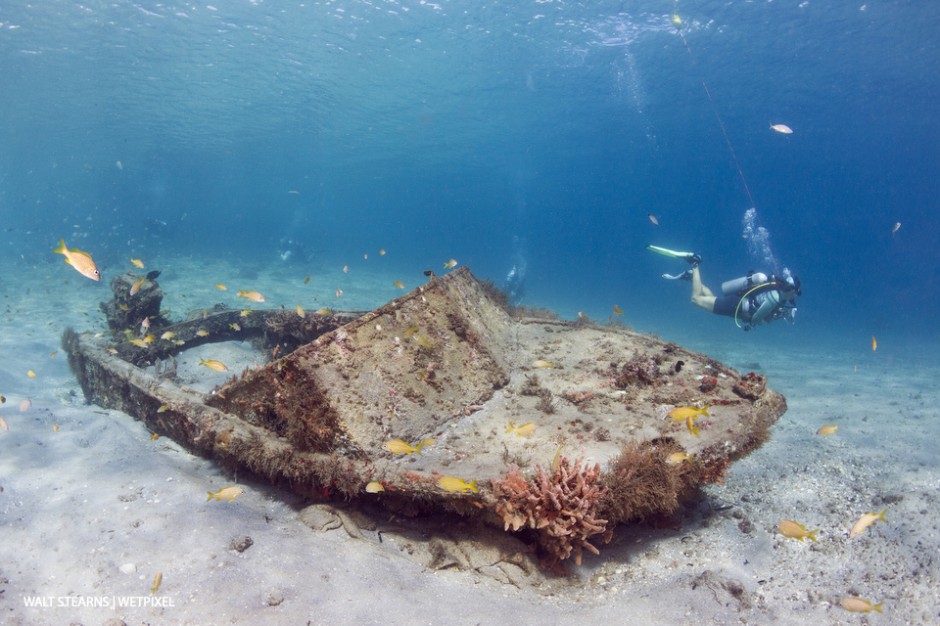
Referred to as the best shore dive and much dive in Florida, Blue Heron Bridge during the incoming tide can present surprisingly good underwater visibly along with a cache of fish and invertebrates.
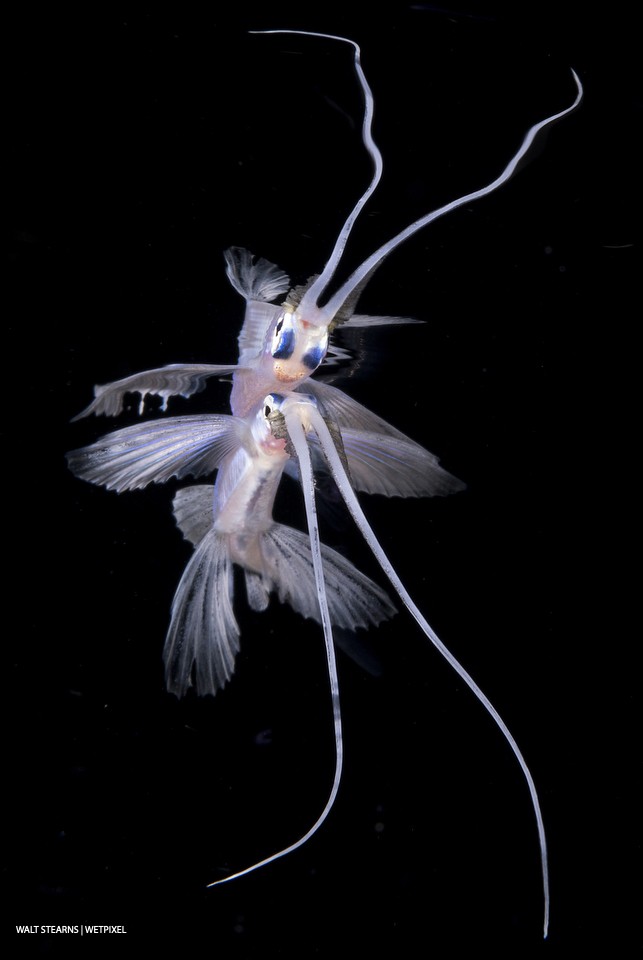
Fu Manchu flying fish for its excessively long mouth tendrils is but one of the thousands of things to see on a Palm Beach blackwater dive.

Juvenile blanket octopus during a Palm Beach blackwater dive in the Gulf Stream.
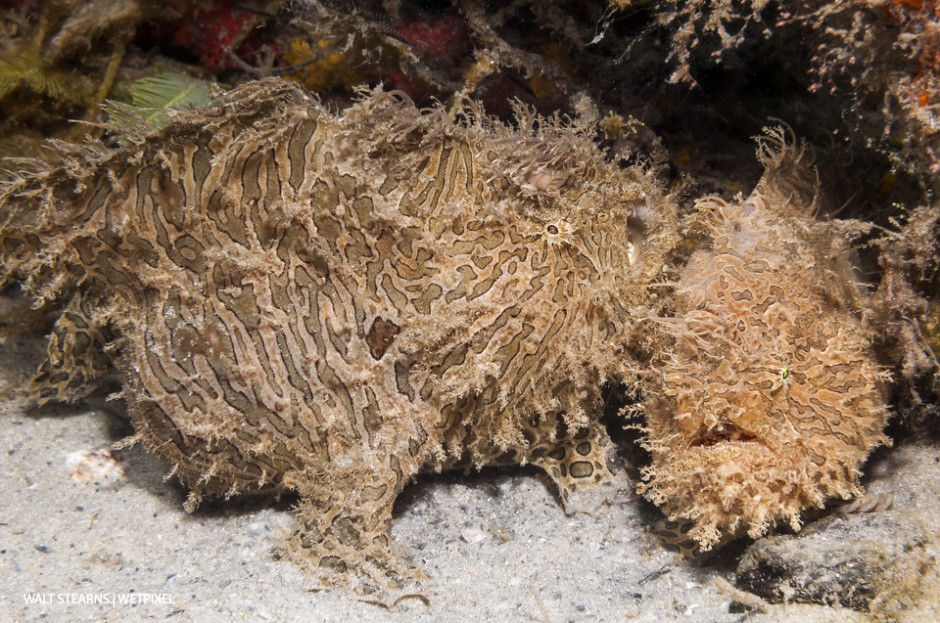
Pair of striated frogfish (Antennarius striatus): No visit to Palm Beach is complete if you have not done a dive at the Blue Heron Bridge during the incoming tide.
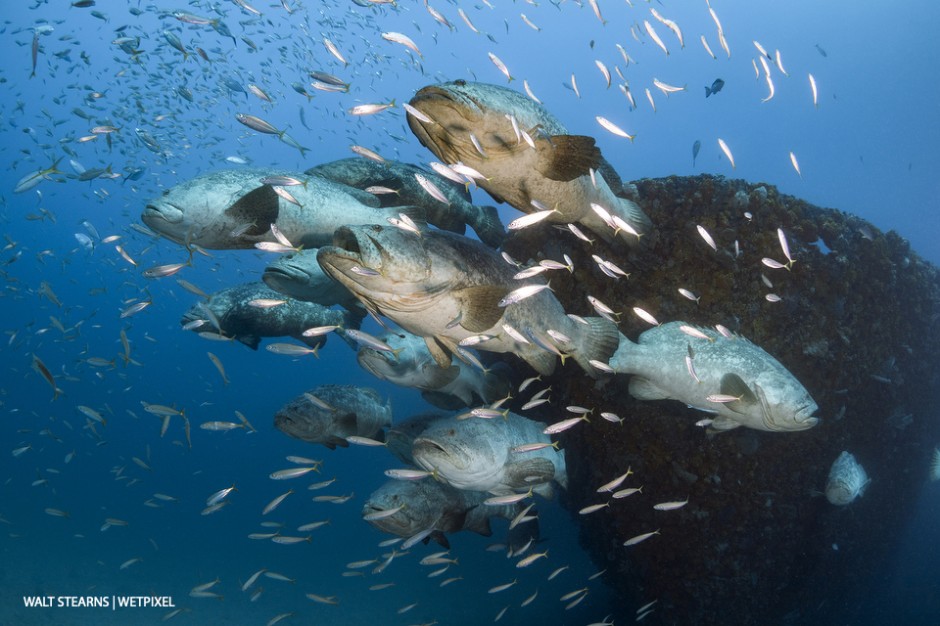
Goliath groupers (Epinephelus itajara) hover in a formation off the bow of a shipwreck in Palm Beach Florida.
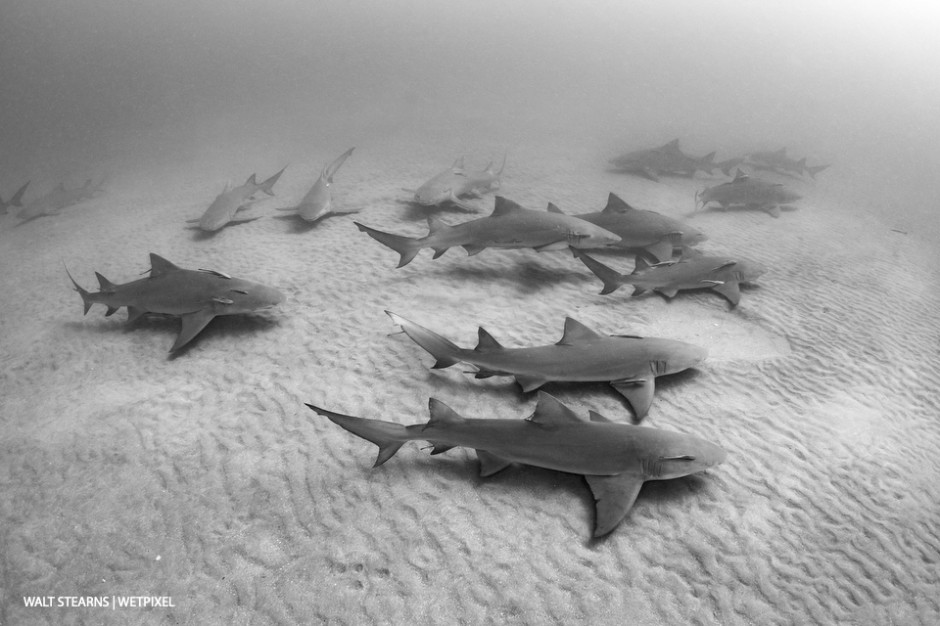
No, this is not Tiger Beach. In northern portions of Palm Beach in the Jupiter and Juno Beach area, the winter season brings a bigger influx of sharks, like this aggregation of adult lemon sharks (Negaprion brevirostris).
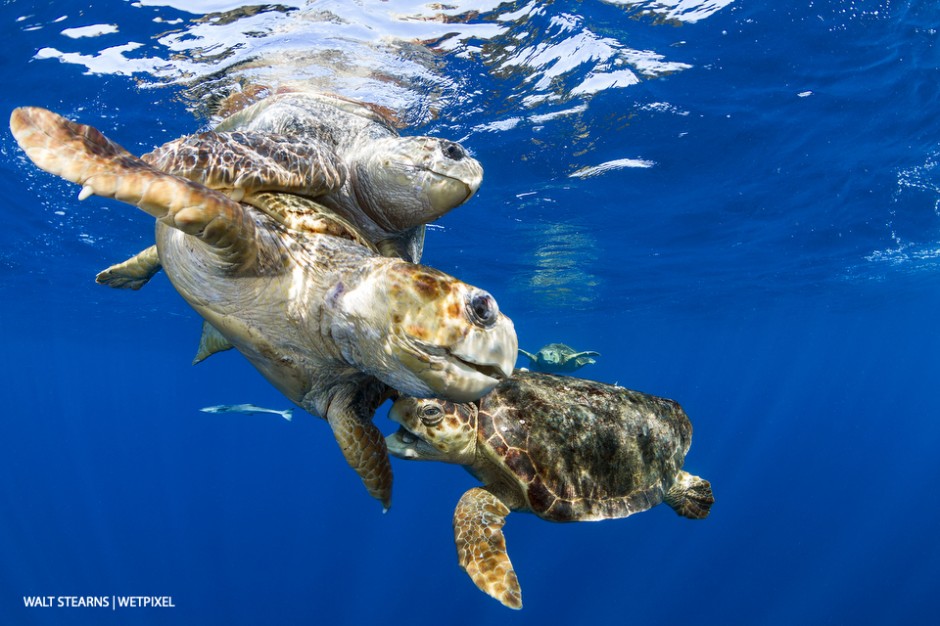
During the months of Spring on into early Summer, the waters of Palm Beach heat up with the mating of sea turtles. With loggerhead turtles (Caretta caretta) romantic affairs can turn quite contentious.
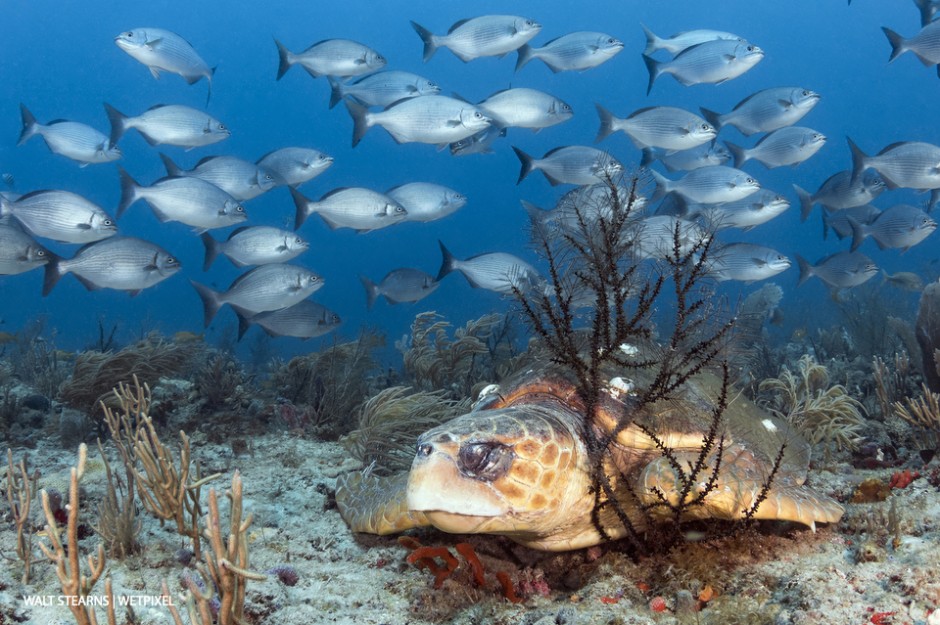
Loggerhead turtles (Caretta caretta) are common trademark to diving in Palm Beach waters. To not see at least one during a dive is considered a bad day, which is very few and far between.
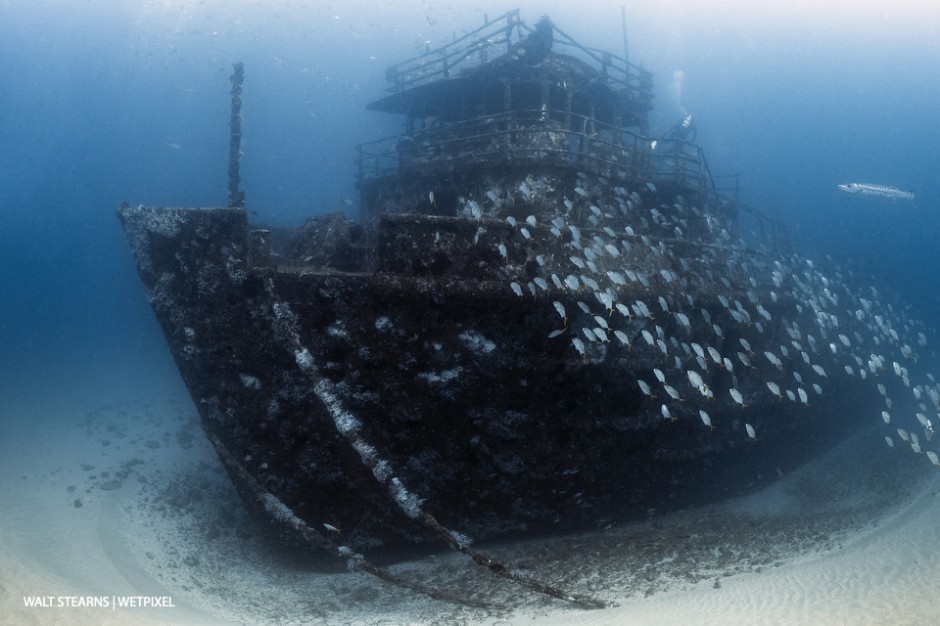
M/V Ana Cecilia wreck off of West Palm Beach. While wreck diving is not one of the Palm Beach Coasts signature traits, there are a few in 70 – 100-foot depth range that makes for a fun dive.

A large school of grunts (Haemulon plumierii) thread their way beneath a large overhang.